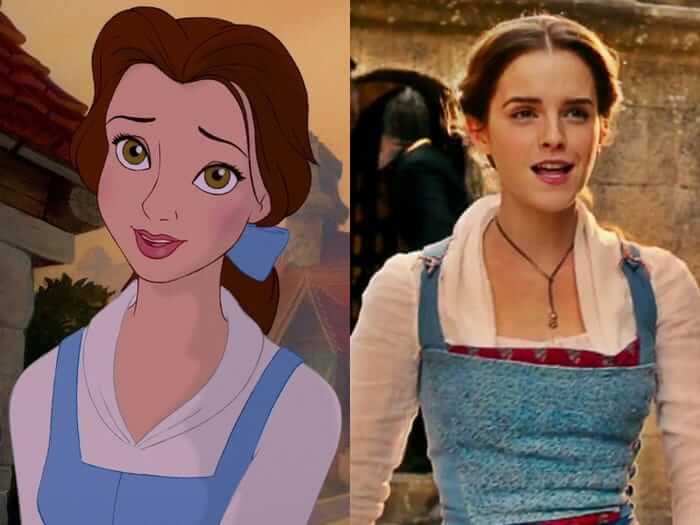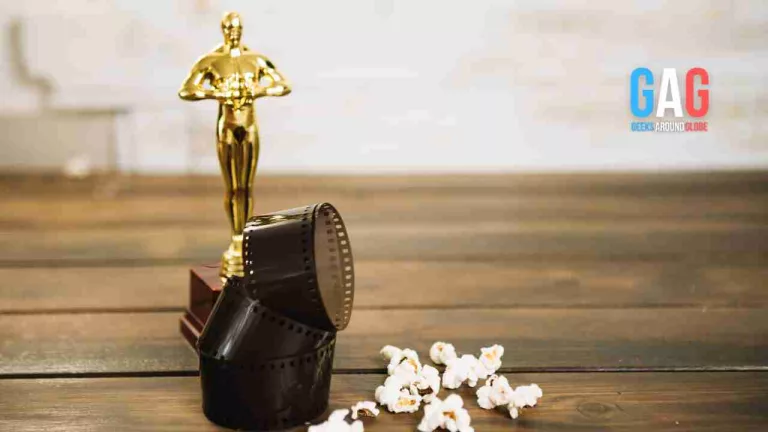Over the past decade, Disney has released live versions of its major 20th century animation hits. In 2019 alone, remakes of Aladdin , Dumbo , The Lion King , Lady and the Tramps, as well as the sequel to Maleficent , based on Disney ‘s classic Sleeping Beauty , were released in a row . Further more – the shooting of the new “Hunter X Hunter Season 7” is underway , Emma Stone will play the villainess Cruella from “101 Dalmatians” , there are even plans to restart “Snow White” , and immediately as a franchise with solo projects for the prince and the princess’s sister.
The wave of remakes of Disney animation from the gold and silver periods didn’t start yesterday. In 1994, the now-forgotten film “The Jungle Book” was released, based not so much on the work of Kipling as on the classic Disney cartoon from 1967 . At the very end of the last century, a much more successful dilogy “101” and “102 Dalmatians” came out with the brilliant Glenn Close as the villainess Cruella De Ville. However, the studio really put on stream the renovation of classic animation only in the 2010s, after Tim Burton ‘s Alice in Wonderland grossed more than $ 1 billion worldwide.
Do not believe in fairy tales: “Maleficent”
Tim Burton was also originally supposed to shoot an alternate version of Sleeping Beauty, but he dropped out. He was replaced by special effects artist and winner of two Oscars for Avatar and Alice in Wonderland, Robert Stromberg. The script for the future film was written by Linda Wolverton – the one who filled the cartoons “Beauty and the Beast” and “Aladdin” with feminist ideas . She also turned the plot about an innocently cursed princess and an insidious witch upside down: the heroines became allies, and the main antagonist was the king Stefan (Overlord Anime Season 4), obsessed with a thirst for power.
Maleficent performed by Angelina Jolie was once in love with Stefan, but he betrayed her and sacrificed his ambitions. The mistress of beautiful swamps, inhabited by various fabulous animals, lost faith in true love and bewitched Stephen’s newborn daughter Aurora (El Fanning). The remedy for breaking the spell is the kiss of true love – the cornerstone of all Disney tales of innocent girls and handsome princes. But here, too, Wolverton came up with an original move – the prince does not have time to truly fall in love with the princess for that short meeting in the forest, the awakening is threatened, and the viewer can only hope for female solidarity.
Walt Disney’s patriarchal legacy
For decades, genius and villain Walt Disney has broadcast his own patriarchal, conservative, sexist, and sometimes even racist views. For example, after several losses at the Oscars, he stopped taking his wife Lillian with him, believing that she brings bad luck. Disney was very reluctant to hire women, believing that they could become pregnant and thus harm the work process. Disney cartoons of the classic period supported gender stereotypes, featuring submissive and pretty girls, whose only dream is marriage and procreation. The success of the studio production was accompanied by strikes by employees who were forbidden even to join trade unions. In 1941, they went on strike for five weeks, demanding better working conditions. The film by the Song of the South studio was already called racist in 1946.
In 2020, the now-former head of the studio, Bob Iger, announced that Song of the South would never appear on the Disney + platform. Other troubled cartoons are available online, but are accompanied by a warning disclaimer about racist stereotypes and whitewashing (where ethnic minority characters are played by white actors). In the distant past, Disney made millions from the conservative aspirations of the public, the studio is now making billions from revisionist remakes that reinterpret the mistakes of the past. A radical interpretation of the old plot of “Maleficent” brought 750 million dollars at the worldwide box office. And the more modest success of the second part, where both the familiar love line and the classic Disney villain (the queen played by Michelle Pfeiffer) reappeared, only confirmed that the audience is ready for a change.
Timeless classics: Cinderella and the English drama school
However, the studio no longer attempted to change familiar plots so drastically. Next came Cinderelladirected by Kenneth Branagh in the best traditions of the English drama school. The stake was placed not on special effects, but on acting. It seems that Branagh had in his head not only the classic cartoon with its gold standards, but also the ironic, subtle Soviet film adaptation of 1947, played by Meyerhold actors. The roles of fairy-tale characters were played by Lily James (Cinderella), Helena Bonham-Carter (fairy godmother), Cate Blanchett (stepmother), Stellan Skarsgard (Happy Season 3). This time, the interference in the plot was jewelry. So, the evil stepmother finally found motivation – now she hated her stepdaughter out of jealousy (Cinderella’s father married her out of despair, continuing to love his deceased wife). Prince Kit (Richard Madden) and Cinderella met by chance in the woods, and the ball became a logical continuation of their first meeting – the young man persuaded his father to invite the whole kingdom to the party, hoping to meet the stranger again. The fairy godmother from a good-looking woman of advanced years transformed into a chic and brilliant lady in her prime. Still, the three-time Oscar winner (for Young Victoria,”Aviator” and “Shakespeare in Love”) legendary Sandy Powell. Cinderella was slightly less profitable than the studio’s previous game tales, but it won critical acclaim. The Wrap magazine even called it the best remake the studio has ever produced.
Knight as a mantel clock: “Beauty and the Beast”
In the 1990s, the animated Beauty and the Beast was perhaps one of the most progressive Disney cartoons: the main character Belle read books and heroically saved the main men in her life (father and prince) from mortal danger. Live-action versionBill Condona was made according to the same recipe as “Cinderella”: minimal interference with the original plot and outstanding English actors in supporting roles. Motion capture technology made it possible to convey their facial expressions and movements to speaking interior items. So, Ewan McGregor played a candelabrum, Stanley Clouds played a harpsichord, Sir Ian McKellen played a mantel clock, charismatic Audra MacDonald played Madame Wardrobe, and Gugu Mbata Rowe played an elegant dust brush. The latter two roles have been greatly expanded from the animated version and are remarkably played by black actresses. The studio, as always, took into account the criticism – the cartoons of the 90s were scolded primarily for gender imbalance: in addition to the main characters, almost all the characters were men. The negative characters were also changed – the arrogant and cruel Gaston (Luke Evans) became a veteran of the Napoleonic wars, apparently suffering from post-traumatic stress disorder, which explained his unmotivated cruelty, and his henchman LeFu (Josh Gad) unquestioningly carried out the orders of his patron only because he felt unrequited tender feelings for him. Director Bill Condon convinced the producers to keep the conventions of the musical and to reincarnate all the musical numbers on the screen. The result exceeded all expectations – the film grossed $ 1.2 billion and earned two Oscar nominations for Best Costumes and Best Set. and his henchman LeFu (Josh Gad) unquestioningly carried out the orders of his patron only because he had unrequited tender feelings for him. Director Bill Condon convinced the producers to keep the conventions of the musical and to reincarnate all the musical numbers on the screen. The result exceeded all expectations – the film grossed $ 1.2 billion and earned two Oscar nominations for Best Costumes and Best Set. and his henchman LeFu (Josh Gad) unquestioningly carried out the orders of his patron only because he had unrequited tender feelings for him. Director Bill Condon convinced the producers to keep the conventions of the musical and to reincarnate all the musical numbers on the screen. The result exceeded all expectations – the film grossed $ 1.2 billion and earned two Oscar nominations for Best Costumes and Best Set.
“Aladdin” against racial discrimination
The new film adaptation of Guy Ritchie’s “Aladdin” looked completely different, the director also chose not to change the musical, keeping all the cult melodies and musical numbers of the original. But in his interpretation, the film ceased to resemble a Broadway production. The style of the new “Aladdin” was much closer to the Oscar-winning “Slumdog Millionaire”Richie’s compatriot Danny Boyle, with all his stylized Indian musical melodramas. The role of the rebellious princess Jasmine (Naomi Scott) was significantly expanded, now she not only resisted her father’s will and the prospect of an unwanted marriage, but also spoke eloquently about her right to rule the state on equal terms with men. The studio also took into account allegations of whitewashing – this time Jasmine was played by half Indian Naomi Scott, Aladdin by Egyptian-born actor Mena Masood, Jinnah by African-American Will Smith, and Jafar by Iranian Marwan Kenzari. “Aladdin”, like previous remakes, was successful at the box office and grossed $ 1 billion.
Mulan: China and feminism take over Hollywood
The next princess on the list was Pocahontas , but the studio is unlikely to ever dare to return to the awkward storyline of the colonization of the New World. Moreover, James Cameron found a way to tell this story anew in the blockbuster Avatar. The upcoming sequels to the film, in fact, are already Disney projects, because since 2017, 20th Century Studios (which released the first part of Avatar) is practically a division of the Disney media corporation.
So it was Mulan’s turn – the ideal warrior, a decade ahead of the Marvel superheroines and strong female characters of the Star Wars universe . The new version of Mulan features an all-Asian cast: Chinese pop singer and actress Liu Yifei and Chinese and Hollywood movie superstars Jet Li and Gong Li. The casting is due not only to ethical, but also economic reasons – before the premiere of the film, film distribution in China was developing rapidly, and over the past year it completely surpassed Hollywood in financial terms: total box office receipts reached $ 1.988 billion. For the first time in history, the United States was in second place with a profit of 1.937 billion. That is why Mulan is so reminiscent of Zhang Yimou ‘s spectacular films “Hero” and “House of Flying Daggers”- famous Chinese hits in the wuxia genre (The Asterisk War Season 3). Mulan runs along the walls and in every possible way overcomes the laws of attraction in the literal sense, walking towards the goal over the heads and shoulders of his opponents.
Walt Disney once did not hire women, and today’s producers are diligently working on the mistakes of the past: Mulan is a film about a strong woman, directed by women. Its creators are New Zealand director Niki Caro and cameraman Mandy Walker, who previously worked on the epic Australia and intimate Hidden Figures…. It is symbolic that they tell their own story – about how a woman achieves success in the male profession, breaking through the glass ceiling. Mulan is only the second big-budget blockbuster directed by a female director, and female cinematographers have only started filming large-scale projects in recent years. Indeed, in Hollywood, and in any lucrative sphere, be it politics or business, you still have to be a real warrior, just like the heroic Mulan.







